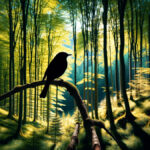Japan’s oldest school, the Ashikaga School, has many books and autumn events. Bakusho,. The books are exposed to the elements to protect them from insects.
Such measures against insects have long been used in temples and libraries with large collections of books. And a typical insect that eats books is the paper fish, the subject of this trivia.
Despite its name and fish-like appearance, the silverfish is of course not an aquatic creature. The name silverfish comes from its silver-blue colour and fish-like movements.
Tends to avoid light. They are most active at night.
Their staple diet is carbohydrates and protein. Substances include book bindings, cellulose, shampoo, silk, insect carcasses, linen and wallpaper glue. One of the reasons they are considered pests is because of their preference for paper and damp clothing. Conversely, insect damage can be reduced by paying attention to books, and damp clothing.
They can survive for long periods of time (up to a year in some cases) without feeding, provided the environment is humid. This makes them a particularly persistent pest for those who are annoyed by them, as well as for themselves.
They can be quite dangerous in libraries and paper goods shops, where their feeding preferences mean that they can chew through books and other paper products, causing considerable damage.
On the positive side, paper fish are among the oldest insects in existence, having been around for more than 400 million years, making them older than dinosaurs. So we get to see a precious piece of ancient history. (We don’t want to see too much of it, though.)
Silverfish prefer damp places. They are often found in damp places such as kitchens, bathrooms, attics and basements. They are also known to travel long distances in search of food.
Unlike many insects, silverfish moult repeatedly throughout their lives. During the moult process, the exoskeleton is stripped off, but the proteins contained in the exoskeleton may be eaten afterwards to re-use them…
The ritual involves the male dropping a seminal vesicle, which is then picked up and fertilised by the female. After mating, the female lays up to 20 eggs a day in small crevices and cracks.
The good news is that, unlike other pests, they are only startled when they find them and they do not transmit disease.
Despite their ant-like size, they are not social insects and do not live in colonies. They are also not known to nest or have a hierarchical social structure.
They are characteristically flattened and elongate, with a body length of 12-19 mm, and are characterised by three long, hair-like hairs (cerci) extending from behind the abdomen, which give them the appearance of being longer in length.
They are found all over the world. Homeowners in humid areas are more likely to encounter these insects, as they prefer humidity and temperatures between 70 and 80 degrees Fahrenheit.
Their habit of preferring hidden, damp areas makes them difficult to eradicate completely. But there are ways to manage and control populations by reducing humidity, sealing gaps and cracks and using chemical control agents such as insecticides.
Lifespan. Many people may think it lasts up to a year. This varies greatly depending on environmental conditions and can range from three to eight years, which is quite long for an insect.
They do not bite humans or pets. They just eat things. They may have a gentle disposition.



コメント